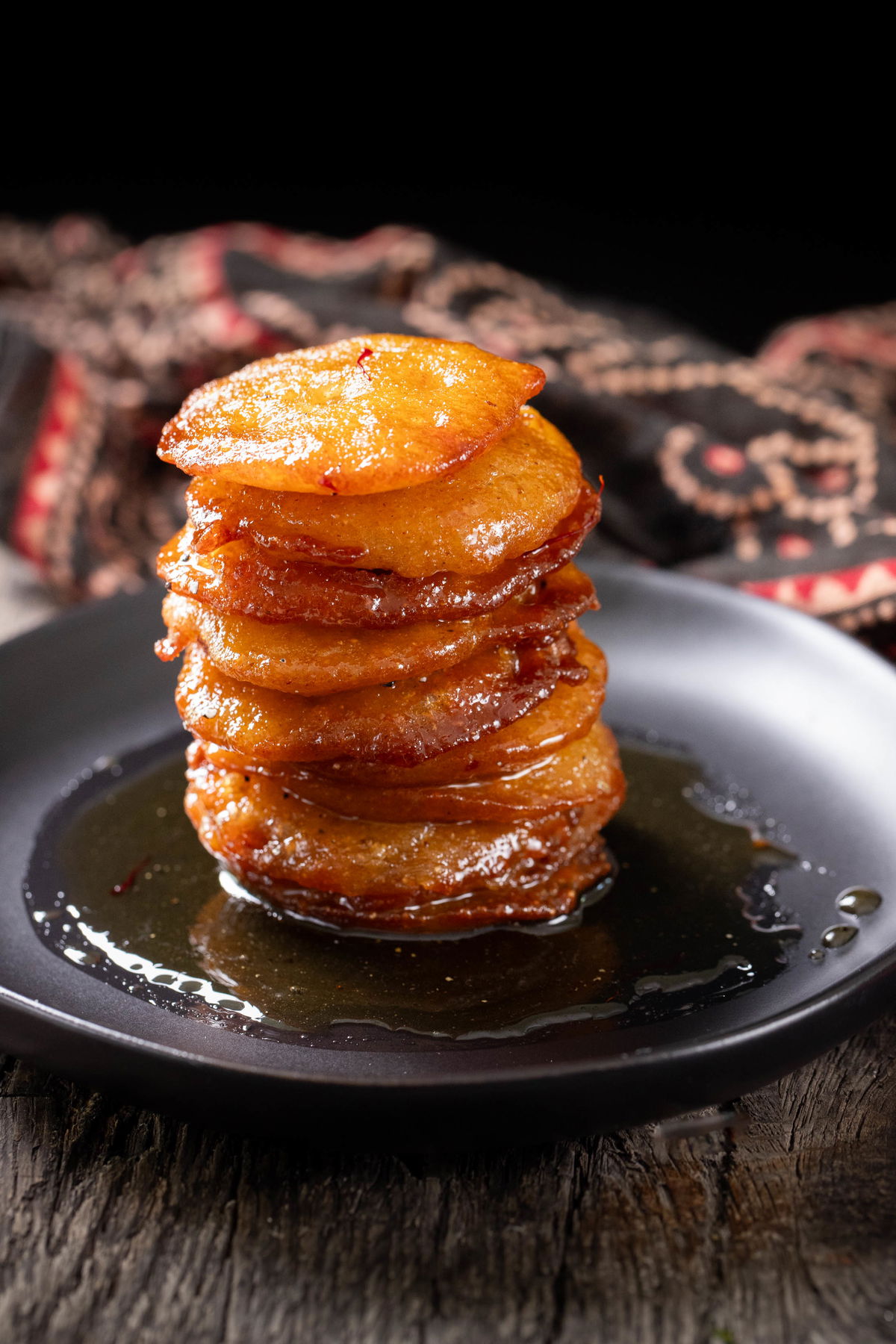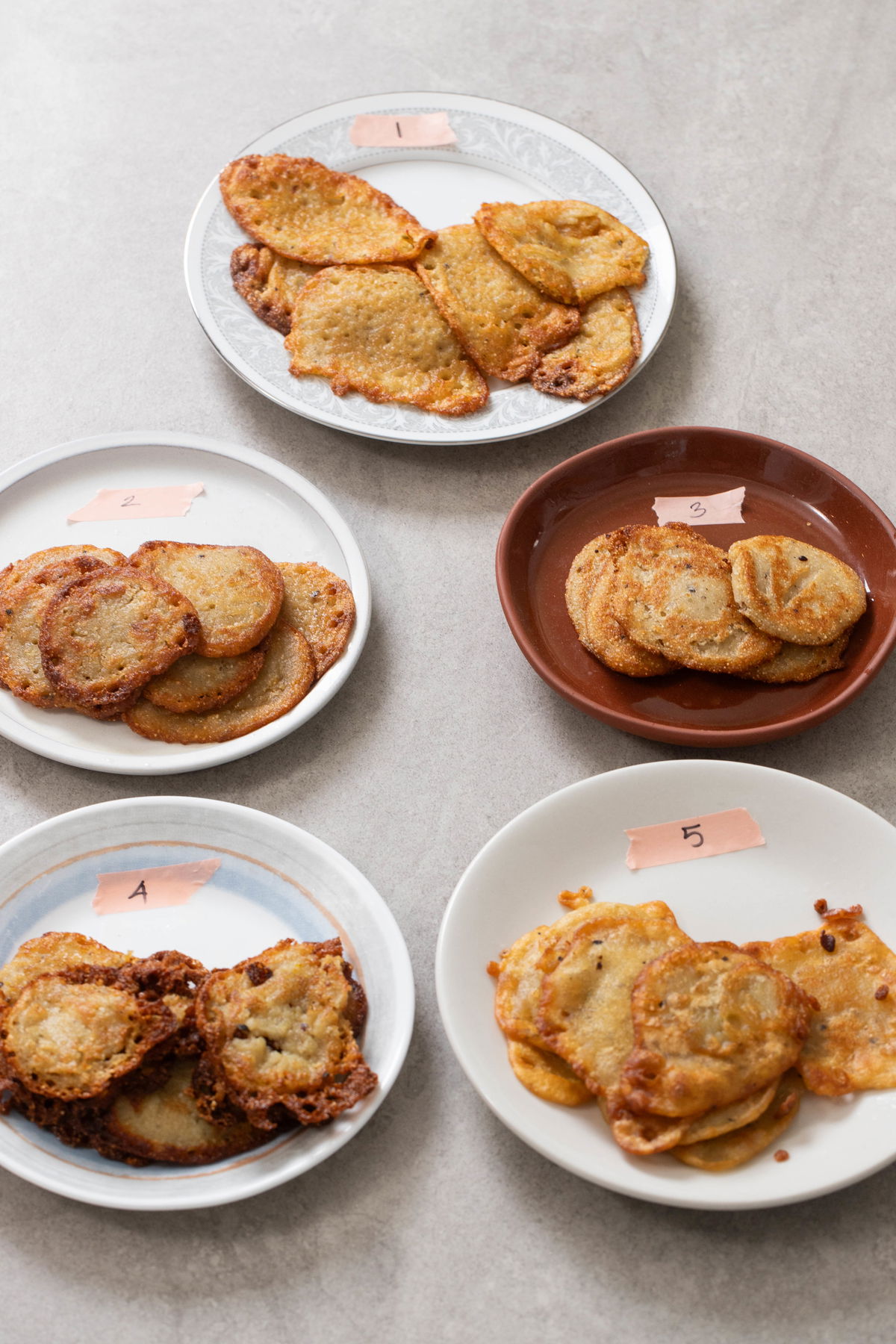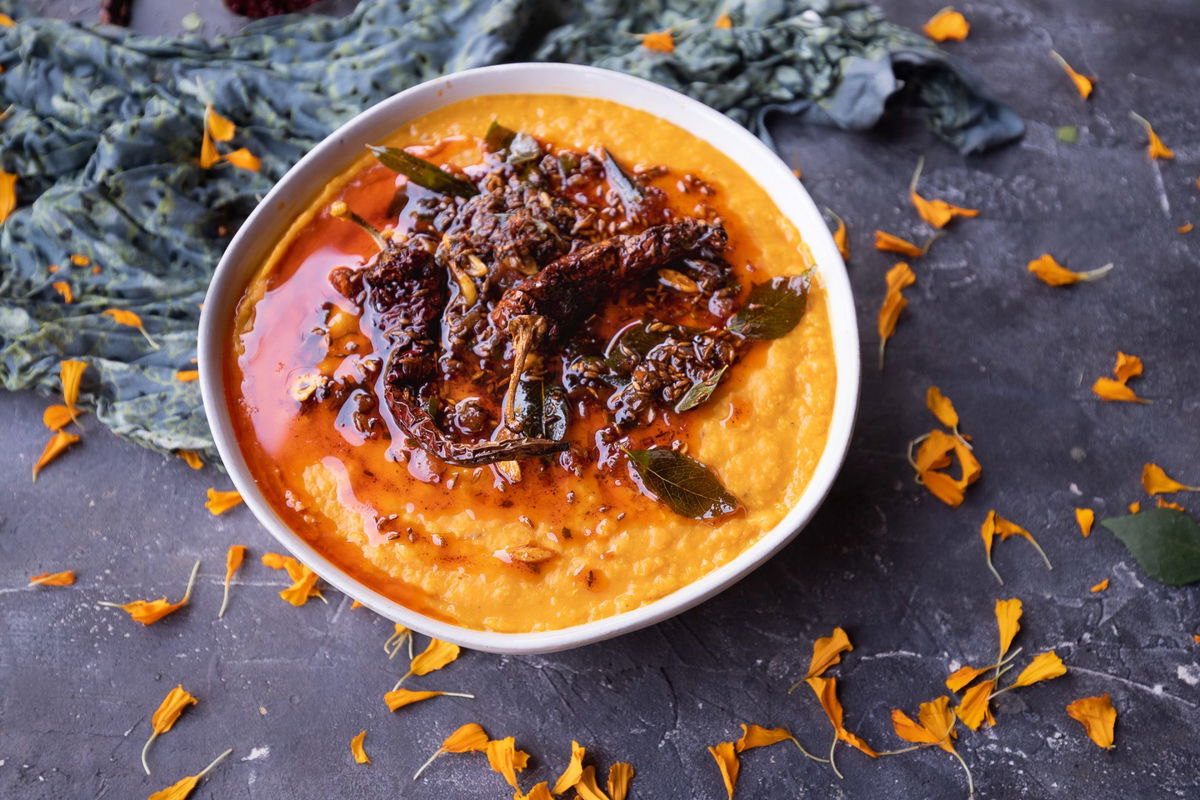Known to be over 5,000 years old, malpua is India’s oldest dessert. This sweet, which is still enjoyed by many in celebration, are made by frying a batter and soaking in a sweet syrup.
About this Recipe
I’ve been making malpua, (“malpuda”, as we call them in Gujarati), since I was a child, but I only recently looked up its ancient history. Malpua are referenced in the Rig Veda, which refers to them as “apupa.”

The dessert would have been made very similarly to how they are made today, with a couple of minor changes. In the time of the Rig Veda (about 3,500 BCE), the predominant grain in India was barley, so these were made with barley flour. Today they are most often made with wheat flour. And even though sugar cane is native to India, during ancient times, they were mostly made with a honey syrup rather than a sugar syrup.
Malpuda reflect a few important cooking technologies that were significant accomplishments, such as ghee making, deep frying, and grain milling.
I wanted to make a malpua that was as close to the ancient version as possible and created this recipe to reproduce as well as I could the original malpuda.
Testing the Recipe

Like many ancient recipes, instructions for this old style of malpuda are very vague. Most references mention only the ingredients used with very little information about quantities and process. I experimented with many ideas for this recipe before arriving at this one. In the end, I kept it as simple and as close to the original list of ingredients as possible.
I tested this recipe with and without yogurt. I tried a couple different options for the honey syrup, included straight honey. I also tested a few different consistencies of barley flour. I tried a coarse blended flour and a finer blend. I also wanted to see if I could make my favorite malpua recipe with barley instead of wheat.
Many modern recipes for malpua use yogurt and often ferment the batter for a few hours. I tested this but ultimately decided to use a plain unfermented batter. I prefered the ease of making it this way and I could not find any historical records of the early malpua being fermented.
For the honey, I first tried using straight honey slightly warmed up. It was too sweet and did not absorb well into the malpua. After a few tries, I found that diluting the honey with water and heating it to a simmer works perfectly. I also add cardamom and saffron to my honey syrup because I can’t imagine sweets without them. They are not mentioned in the original references and ought to be skipped if you are seeking to stay as close to the original as possible.
The biggest challenge with putting this recipe together was getting the barley flour right. I wasn’t able to find already ground barley flour, so I made my own from pearl barley. The first challenge with that was getting the grind just right. At first I aimed for the coursness of rava, as rava and wheat flour are what I use in my normal malpuda. But I found going just a little bit finer made more sense. Barley tends to have a little less gluten than wheat and I think the finer grind helped bring out the gluten to hold the batter together better.

Variations
- Spices are optional. You can add cardamom, fennel, and black pepper to the batter. You can also add saffron for an extra pinch of luxuriousness. The black pepper would have been available back then. I often don’t make my malpuda with these spices, and that is closer more likely to the original recipe. Only the black pepper was commonly used during the time of the rigveda. But I feel without adding them to the syrup or the malpuda the result is not very “Indian” – tastes more like honey pancakes without that modern Indian spice profile.
- Replace the honey syrup with jaggery syrup. I used honey for the sake of authenticity but I prefer jaggery. The barley malpua in a jaggery syrup are delicious!
- Swap the water in the recipe for milk for a creamier mouthfeel.
- For modern malpua, swap the barley flour for 1/2 cup + 2 Tbsp all purpose wheat flour and 2 tablespoons rava (semolina).
Cooking Tips
- Getting the batter consistency right is really important for getting the right texture of malpua. They should be soft in the center, but have crunch around the edges.
- Adjust the amount of liquid as needed to get the right consistency. It should be like a thick pancake batter.
- Frying temperature should not be too hot or too cold. Aim for about 325°F (163° C), which is a “normal” frying temperature, and be sure to test a malpuda before pouring in a whole batch.
- It can be expensive, or seem wasteful, to use the quantities of ghee needed to fry malpua. If you don’t want to use all ghee, you can use a neutral oil + 1-2 tablespoons of ghee to get the flavor and aroma without having to use all ghee.
- The malpua batter can be prepared ahead of time (up to 3 days) and refrigerated. I recommend serving the malpua warm because the crunchy texture is so important to the enjoyment of malpua. That said, they can be stored in the refrigerator or freezer and warmed up in the microwave or stovetop.
Barley Malpua
Malpua is an Indian sweet made by frying a batter and then soaking it in a sweet syrup. It is an ancient traditional sweet that has been enjoyed for over 5,000 years.

Ingredients
For the malpua
- 3/4 cups barley flour (or ground pearl barley)
- 2 Tbsp honey
- 2 Tbsp heavy cream
- 1 cup water (may need a little more or less)
- 1 cups ghee (for frying)
For the Syrup
- 1/2 cup honey
- 1/4 cup water
- 1/4 tsp cardamom powder
- 1 pinch saffron (crushed (optional))
Instructions
- Using a high powered blender, grind the barley to a powder, about 2 minutes in a Vitamix or other high-powered blender.
- Combine barley flour, heavy cream, 2 tbsp of honey, and 1 cup water in a medium bowl.
- Cover and let rest for 30 minutes. Stir the batter and check consistency. Add more water 1 Tbsp at a time if needed to achieve a thick pancake batter consistency. This should take no more than an additional 1 to 4 Tbsp of water.
- In a shallow pan, heat ghee to frying temperature (about 325°F/ 163° C). Drop a spoonful (I like to use a tablespoon measure for equal sized malpua) of the batter to the ghee. Fry both sides evenly until golden brown in the center with darker, crispy edges. It’s best to start with 1 to test. If the malpua is too thick, add water to thin the batter. If it is too thin, add flour.
- Spoon the batter into the oil and deep fry the malpudas, about 8 at a time. Take care not to overcrowd the pan. Flip each malpuda a few times to ensure even cooking. Remove from pan onto a plate with a paper towel to cool.
- Heat 1/2 cup of honey and1/4 cup of water, as well as the saffron and cardamom, if adding, in a pan, on low heat until just simmering. Add malpudas to the honey. Stir to coat and allow the honey to soak into the malpudas for 1 minute (leave the heat on). Remove the sugar soaked malpua onto a platter and serve warm.
